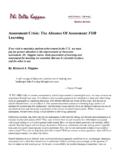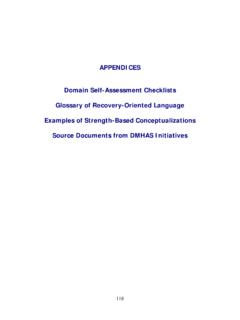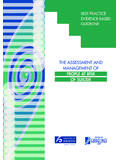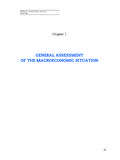Transcription of SUICIDE ASSESSMENT AND INTERVENTION …
1 KPBSD SUICIDE ASSESSMENT manual Page 1 KENAI PENINSULA BOROUGH SCHOOL DISTRICT SUICIDE ASSESSMENT AND INTERVENTION manual October 2010 KPBSD SUICIDE ASSESSMENT manual Page 2 Table of Contents Page Acknowledgements 3 PART 1: Preventing SUICIDE SUICIDE and schools: Why we must be proactive 4 KPBSD policy statement (Currently being developed) 5 Risk Factors and Warning Signs 6 SUICIDE Risk ASSESSMENT and INTERVENTION Procedural Flow Chart 10 APPENDIX A: School Procedure Checklist 11 APPENDIX B: Form S-1: SUICIDE Risk ASSESSMENT Screener and Interview 14 APPENDIX C: SUICIDE Risk ASSESSMENT Worksheet 21 APPENDIX D: SUICIDE INTERVENTION Protocols: SIP-1 to SIP-5 22 APPENDIX E: Notice of Emergency Conference 29 APPENDIX F: No Harm Contract 30 APPENDIX G: Release of Confidential Information Form 31 APPENDIX H: Community Emergency Resources 32 REFERENCES 33 NOTE: A SUICIDE ASSESSMENT Packet containing copies of the flow chart and Appendices A through G can be found in the district Forms Folder.
2 This packet can be quickly printed for use as needed. KPBSD SUICIDE ASSESSMENT manual Page 3 Acknowledgements This manual has been and will hopefully continue to be an evolving work incorporating new developments and research in our understanding of the factors that contribute to students who resort to self-harm and SUICIDE . The predecessor to this manual was the document SUICIDE INTERVENTION Materials prepared in 2000 by the following KPBSD employees: Mark Norgren, Theo Lexmond, Katy Cross, Ken Hepner, Sara Moore, Jon Lillevik, and Vanessa Meade. These materials were reviewed and portions were revised, expanded, and added to this manual . The National Association of School Psychologists has supported and published a wealth of chapters and books over the years keeping practitioners informed of the latest data and best practices in this arena.
3 Their publications and the professionals who authored them provided valuable reference material that contributed to this latest effort. Following its development, the manual was reviewed by a committee of district administrators, 3 building administrators, 3 school psychologists, 3 counselors, and 2 nurses. It was then implemented in the district and data gathered from each use to evaluate and improve the tools and worksheet included in the manual . Tim McIntyre, Kenai Peninsula Borough School District October 2010 KPBSD SUICIDE ASSESSMENT manual Page 4 SUICIDE and Schools: Why we must be proactive SUICIDE is the third most frequent cause of death among youth between the ages of 10 and 24. Since 1950, suicides among this age group have quadrupled though there has been a reduction of 20% since 1994. This recent dip is often attributed to growing awareness of the problem over the past 25 years coupled with more concerted efforts to intervene as society has shifted from seeing SUICIDE as a moral problem to viewing it as a coping problem.
4 Despite this increased awareness and INTERVENTION , in 2003, 4232 youth committed SUICIDE in the United States which accounted for of all suicides reported that year (Centers for Disease Control and Prevention, 2006; Lieberman, Poland, and Cassel, 2008). Known suicides are only the proverbial tip of the iceberg and this number underestimates the actual number of deaths to which the factors that prompt suicidal behavior have contributed. It is estimated that for every youth who commits SUICIDE , there are 100 to 200 attempts in the population which amounts to over a million attempts per year in the United States. Of those students who attempt SUICIDE , only one in three will receive medical attention while the other two will get up, go to school, and struggle through the next day (Lieberman, et al., 2008). Furthermore, for each completed SUICIDE , estimates are that 20% to 50% attempted at least once before they actually committed SUICIDE .
5 Translating these numbers from the macro-level to the micro-, in the typical high school classroom three students (1 boy and 2 girls) will make some SUICIDE attempt in the next year (American Association of Suicidology, 2006). Of the 25% of the youth population that will think about SUICIDE each year, 9% will make an attempt. This means that in a school district with 10,000 students between the ages of 10 and 20, roughly 2500 will contemplate SUICIDE in a given year, 8 to 10 will make some form of SUICIDE attempt and 2 of these every 2-3 years will not survive (Lieberman, Poland, and Cowan, 2006). Davis and Sandoval (1991) examined available data on suicides as well as attempts and, though slightly dated, current statistics would suggest comparable sobering estimates: A typical high school of 2000 students can expect a SUICIDE every 5 years and roughly 45 annual attempts of varying lethality.
6 Applying this to KPBSD for comparison purposes, roughly 1 SUICIDE will occur every 5 years across all the large high schools combined and approximately 45 students will make SUICIDE attempts each year. For several reasons, KPBSD staff must be proactive in detecting, assessing, and helping students who are contemplating SUICIDE or exhibiting warning signs. Suicidal ideation, factors contributing to SUICIDE attempts, and the attempts themselves have severe personal and educational implications. Students struggling with suicidal thoughts and other associated risk factors are impaired in their ability to focus, concentrate, regulate their emotions, learn, retain, and perform in school. Furthermore, completed suicides and SUICIDE attempts resulting in serious medical consequences impact many other students as well as school staff potentially impairing their functioning and learning in the school setting for days to years.
7 Finally, society expects school districts and their staff to assist in identifying suicidal students and to help orchestrate the interventions that they need. Courts have allowed school districts to be sued after a student committed SUICIDE because the district did not provide adequate staff training in SUICIDE ASSESSMENT , prevention, and INTERVENTION (Brock, Sandoval & Hart, 2006). For these and other reasons, KPBSD must have: 1) a district policy regarding SUICIDE prevention, 2) protocols guiding staff in their ASSESSMENT and INTERVENTION , and 3) a proactive stance in its efforts to identify, assess, and assist students who are contemplating SUICIDE or exhibiting any of the common warning signs. KPBSD SUICIDE ASSESSMENT manual Page 5 Kenai Peninsula Borough School District Policy for SUICIDE Threats or Attempts This manual has been reviewed by district administration and a policy is being prepared for submission to the school board.
8 KPBSD SUICIDE ASSESSMENT manual Page 6 Risk Factors and Warning Signs Youth SUICIDE is extremely challenging to predict because it is an opportunistic act that is the result of a complex web of multidimensional factors many of which ebb and flow daily in the life of the youth. Research over the past 50 years has identified a number of risk and resiliency factors as well as a cluster of warning signs that can be arranged hierarchically in terms of the potential risk implied. The following is a brief summary of risk factors implicated by studies over the past 5 decades. Keep in mind that these factors interact and influence each other in complex, currently unpredictable ways which is why a profile of the suicidal student cannot be constructed nor have adequate prediction equations been designed to identify which students are most likely to attempt or commit SUICIDE : FACTOR RESEARCH-BASED INDICATIONS Gender More females attempt SUICIDE (3:1) but more males complete SUICIDE (4:1) Ethnicity/Culture Native American males are the highest risk group for SUICIDE with Caucasian males being second.
9 In 2003, Hispanic students had the highest rates of ideation and attempts. African Americans had the lowest SUICIDE rate. Sexual Orientation Adolescents identifying themselves as gay/lesbian are over 5 times more likely to attempt SUICIDE (Massachusetts Dept of Education, 2004). Affective Disorder ( depression) Students with major depressive disorders are 20 times more likely to attempt or commit SUICIDE (American Association of Suicidology, 2006). Females are twice as likely to experience/report a major depression (Berman and Jobes, 1995). Other Psychopathology There is substantial co-morbidity of depression and other or Co-morbidity behavioral problems particularly conduct disorder, oppositional defiant disorder, and alcohol/drug abuse among students who attempt SUICIDE .
10 Co-morbidity significantly increases the risk of SUICIDE attempts compared to adolescents who exhibit only one diagnosis (American Association of Suicidology, 2006) Substance Abuse Individuals with a history of abusing alcohol or drugs are 6 times more likely to commit SUICIDE than the general population (Ramsay, Tanny, Tierney & Lang, 1996). It has been estimated that intoxication is present in half of all youth suicides. KPBSD SUICIDE ASSESSMENT manual Page 7 FACTOR RESEARCH-BASED INDICATIONS Family The following family factors increase the risk of youth SUICIDE attempts: A family history of SUICIDE , significant/chronic medical problems, or psychopathology; financial stress; Loss of family members due to death or divorce; parental separations/divorce/remarriage; Elevated rates of conflict or violence in the home; Perception that the family is not cohesive and has few shared family activities (Brock, Sandoval, & Hart, 2006; Davis & Brock, 2002; Lieberman et al.)






